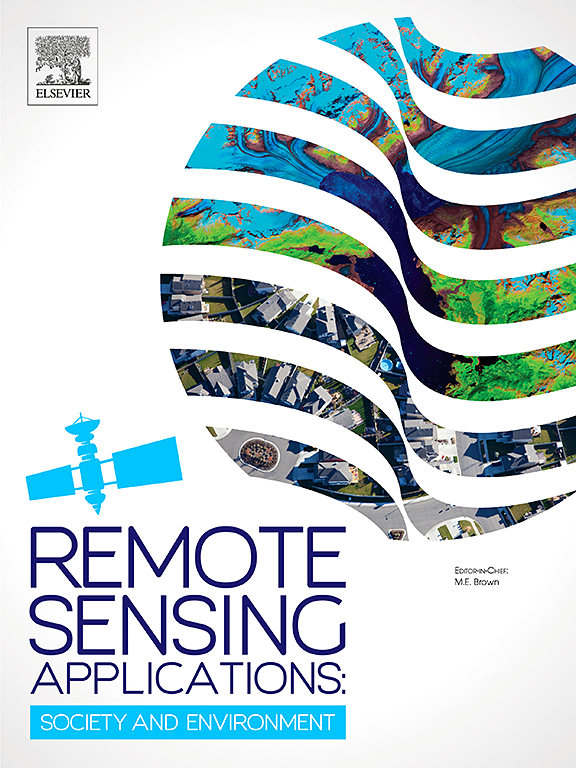Ver ítem
- xmlui.general.dspace_homeCentros Regionales y EEAsCentro Regional La Pampa - San LuisEEA AnguilArtículos científicosxmlui.ArtifactBrowser.ItemViewer.trail
- Inicio
- Centros Regionales y EEAs
- Centro Regional La Pampa - San Luis
- EEA Anguil
- Artículos científicos
- Ver ítem
Precipitation estimations based on remote sensing compared with data from weather stations over agricultural region of Argentina pampas
Resumen
Global patterns of precipitation have changed due to the increase in temperature as a result of climate change. Measuring the amount of precipitation at a given location using surface instruments is relatively simple. However, the great spatial and temporal variability of the intensity, type and occurrence of this phenomenon, makes direct and uniformly calibrated measurements difficult in large regions. Satellite information is an important alternative to
[ver mas...]
Global patterns of precipitation have changed due to the increase in temperature as a result of climate change. Measuring the amount of precipitation at a given location using surface instruments is relatively simple. However, the great spatial and temporal variability of the intensity, type and occurrence of this phenomenon, makes direct and uniformly calibrated measurements difficult in large regions. Satellite information is an important alternative to describe precipitation events; the Global Precipitation Measurement (GPM) mission estimates precipitation, considering different time periods, with three products Integrated Multi-Satellite Retrievals for GPM (IMERG), in near real time. This study evaluates and quantifies, temporal and spatially, the monthly precipitation estimated by Early (IMERG-E), Late (IMERG-L) and Final (IMERG-F) products compared with data from weather stations located in agricultural areas of the Pampas region in Argentina. Data of precipitation belonging to meteorological stations located at four provinces: Buenos Aires, Córdoba, La Pampa and Santa Fe, for 2014–2018 periods, were considered. The spatial performance of IMERG was evaluated using statistical coefficients and Taylor diagrams, considering at region, province and stations level. The adjustment of the products increased from IMERG-E to IMERG–F, obtaining R2 values between 0.86 and 0.95 and RMSE from 14.2 to 29.3 mm, the best results corresponding to Córdoba and the worst to La Pampa. The performance of GPM products varies temporally; IMERG-F presented a higher correlation coefficient and a lower percent root mean square error in warm than in cold seasons. The results indicate that GPM can effectively capture the amount and patterns of monthly precipitation over the Pampas region of Argentina, which is important for its application to agricultural production and disaster prevention.
[Cerrar]

Autor
Ovando, Gustavo Gabriel;
Sayago, Silvina;
Bellini Saibene, Yanina Noemi;
Belmonte, María Laura;
Bocco, Mónica;
Fuente
Remote Sensing Applications: Society and Environment 23 : Article 100589. (August 2021)
Fecha
2021-08-01
Editorial
Elsevier
ISSN
2352-9385
Formato
pdf
Tipo de documento
artículo
Palabras Claves
Derechos de acceso
Restringido
 Excepto donde se diga explicitamente, este item se publica bajo la siguiente descripción: Creative Commons Attribution-NonCommercial-ShareAlike 2.5 Unported (CC BY-NC-SA 2.5)
Excepto donde se diga explicitamente, este item se publica bajo la siguiente descripción: Creative Commons Attribution-NonCommercial-ShareAlike 2.5 Unported (CC BY-NC-SA 2.5)

